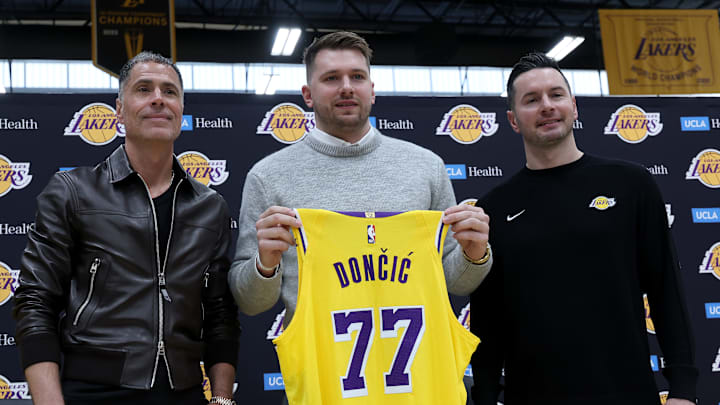The Lakers shook up the NBA with a blockbuster trade deadline, making several moves that drastically altered their roster. The biggest deal saw them land Luka Dončić from the Mavericks in exchange for Anthony Davis, Max Christie, and a 2029 first-round pick.
Rob Pelinka went all-in, pairing Dončić with LeBron James to create a superstar duo. This move checks all the boxes for a title contender, but the Lakers might have sacrificed stability and chemistry for star power.
Additionally, the Lakers acquired Mark Williams from Charlotte, sending Dalton Knecht, Cam Reddish, and future draft considerations in return. Williams, a 23-year-old defensive center, was a great addition to shore up the team’s biggest weakness in rim protection. Only the latter deal was truly necessary.
Did the Lakers need to go this big?
The Lakers weren’t in crisis mode before the trade. They were in a good playoff position and only needed a few tweaks—like adding a solid center—to shore up their roster. Instead, they made an aggressive move that wasn’t entirely necessary.
A more measured approach could have been stopping at acquiring Mark Williams while keeping Davis. That would have patched up the team’s biggest weakness without tearing apart its core. Instead, the Lakers went all-in for Dončić, an elite offensive force, but one who isn’t a perfect fit alongside LeBron.
These trades, along with the earlier season move that sent D'Angelo Russell away in exchange for Dorian Finney-Smith and Shake Milton, fractured team relationships. The constant roster changes disrupted trust and continuity within the locker room. Austin Reaves has already expressed concerns about the emotional toll, acknowledging that the team’s chemistry is being pushed to its limits.
A deal like this would have made more sense for a player like Joel Embiid. The Sixers took a huge risk signing Embiid to a supermax contract, and now he’s missed most of the season. Holding onto an injury-prone superstar on a massive deal is risky.
That is why Philadelphia would have been more justified in trading him for Dončić. On the other hand, Davis was healthy and playing at an MVP level when the Lakers moved him. Trading away a top-tier two-way player mid-season is always a gamble.
Star power over roster construction
Winning teams are built with balance, not just big names. Before the trade, the Lakers had a squad built to compete for the fourth seed in the West. The right move wasn’t a total overhaul—it was finding the missing puzzle piece. Instead, the Lakers swapped out a proven core for a flashy new build, which might not work as smoothly on the court.
Good roster construction fosters trust and chemistry. Players get used to their roles, develop connections, and grow together. Constantly reshuffling for the sake of adding star power can do the opposite—disrupting rhythm and relationships that take time to build.
The Lakers’ move is part of a growing NBA trend: prioritizing instant success over long-term stability. Star-studded teams look great on paper, but chemistry can’t be bought. It takes time, patience, and the right pieces fitting together.
Dončić is undeniably an elite talent, but now the Lakers face the challenge of making it all work. Will they find their groove in time for a deep playoff run? Or will this move backfire, leaving them with an expensive but disjointed roster?
Dončić might even leave the Lakers next year - a fast goodbye. Only time will tell, but one thing is clear—by betting big on talent over trust, the Lakers have taken a high-risk, high-reward gamble. Now, it’s up to them to prove it was worth it.
